For the purposes of television, much of the content of the following interview was edited out of the final cut. Here is the full text. It is shown here because it offers a good overall glimpse of what we do and why we do it. To see what was eventually kept, please see the CBC video on the Media page.
__________________________________________________
CBC’s “Masters of the City: Keepers of an Ancient Culture”
Interview with Douglas Tong
Full text
copyright © 2013 Douglas Tong, all rights reserved
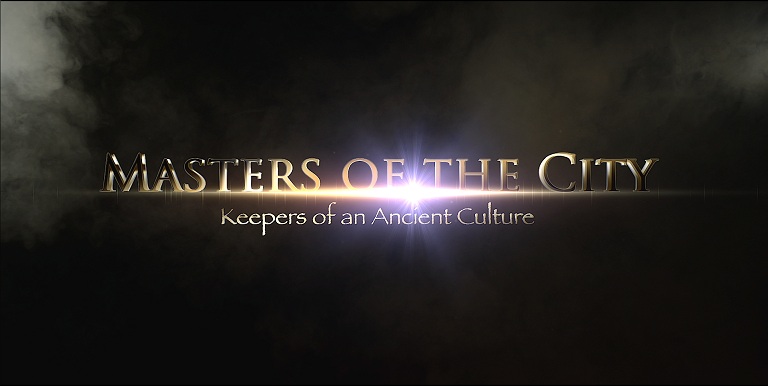
Part 1: Introduction
What is your name and what do you do?
My name is Douglas Tong and I am a teacher of Kenjutsu, the art of classical Japanese swordsmanship.
What Is Kenjutsu?
Kenjutsu refers to the classical styles of Japanese swordsmanship which blossomed in Japan during the Warring States Period (c. 1300-1600), Japan’s Civil War period.
Part 2: Katori Shinto Ryu
At our school, we study two styles of kenjutsu.
What is the history of the style?
One of the styles we study is Japan’s oldest style of swordsmanship named Katori Shinto Ryu. It was created during this Warring States Period, around 1450 A.D. It is over 560 years old.
Tell us about the style
Katori Shinto Ryu was created to prepare samurai for fighting on the battlefield. To survive on the battlefield, a samurai had to be adept at a variety of weapons. A variety of weapons are studied in this style. If you lost your sword on the battlefield, you had to be able to use any weapon you happen to find.
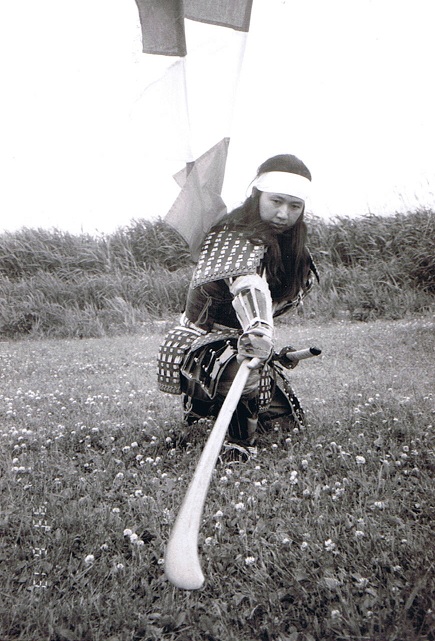 The naginata. The word “naginata” means “mowing down sword” or “reaping sword”.
The naginata. The word “naginata” means “mowing down sword” or “reaping sword”.
It might be a staff.
It might be a naginata.
It might be a spear.
If nothing else was around, you might have no choice but to use your short sword.
Every weapon has unique characteristics: some are longer, some are shorter, some have a blade, some do not.
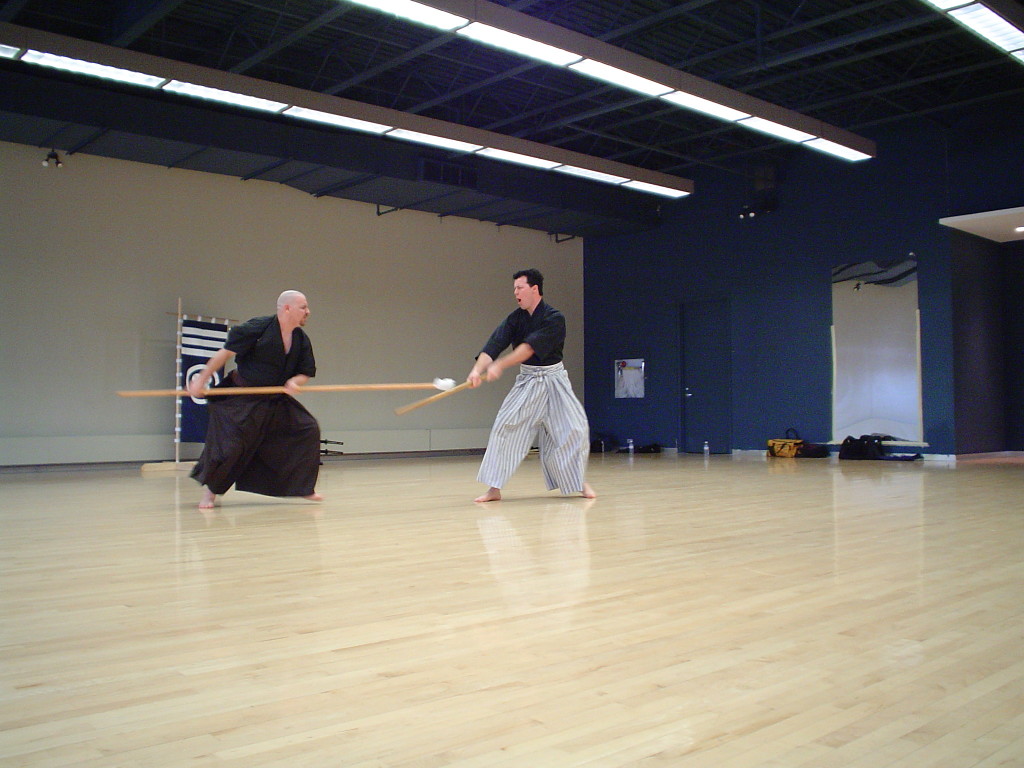 Sojutsu in Tenshin Shoden Katori Shinto Ryu: the study of spear versus sword
Sojutsu in Tenshin Shoden Katori Shinto Ryu: the study of spear versus sword
This style is unique in that it teaches you how to use different types of weapons and it also teaches you how to defend against different weapons.
Who was your teacher?
My teacher in Katori Shinto Ryu was Master Yoshio Sugino. Sugino Sensei was famous because he was the swordfight choreographer for Director Akira Kurosawa’s two most famous samurai films, Seven Samurai and Yojimbo. A Master swordsman who understood the needs and limitations of cinematography, he crafted some of the most memorable swordfighting scenes the world has ever seen. The swordplay in these movies has been hailed as the best Japanese swordplay ever captured on film.
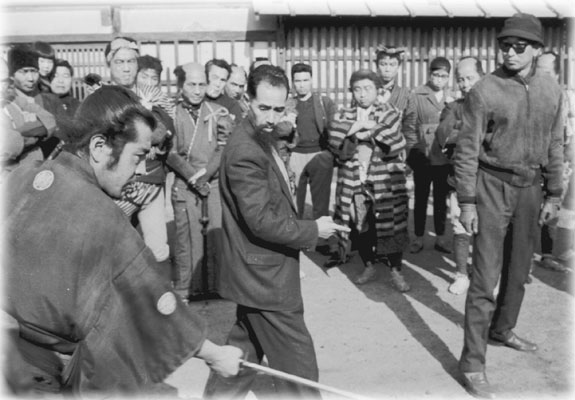
Master Sugino instructing famed actor Mifune Toshiro on the set of Yojimbo with legendary Director Akira Kurosawa (in hat and glasses) looking on
Why do you love this style?
It gives you everything you need (all the tools you need) to be able to fight. The hallmark of this style is its focus on diversity: to be able to attack and defend from any position and with any weapon available.
Part 3: Yagyu Shinkage Ryu
What is the history of the style?
The main style we study here is called Yagyu Shinkage Ryu. Created around 1570 A.D., it is about 450 years old. This is Japan’s most famous and glamorous style of swordsmanship. Why? Because it was the official sword style of the Shogun.
Tell us about the style
Yagyu Shinkage Ryu blossomed in the Edo Period, an era of peace. In 1600, one man defeated all the other warlords and became the ruler of Japan. He became the new Shogun. His name was Tokugawa Ieyasu. He instigated martial law throughout the land and ushered in an era of peace. There was no more battlefield fighting. The focus shifted instead to maintaining peace and order in the growing towns and cities. The Shogun was looking for a sword style whose philosophy fit his new vision and the new reality. He chose Yagyu Shinkage Ryu and it became the official sword style of the Shogun.
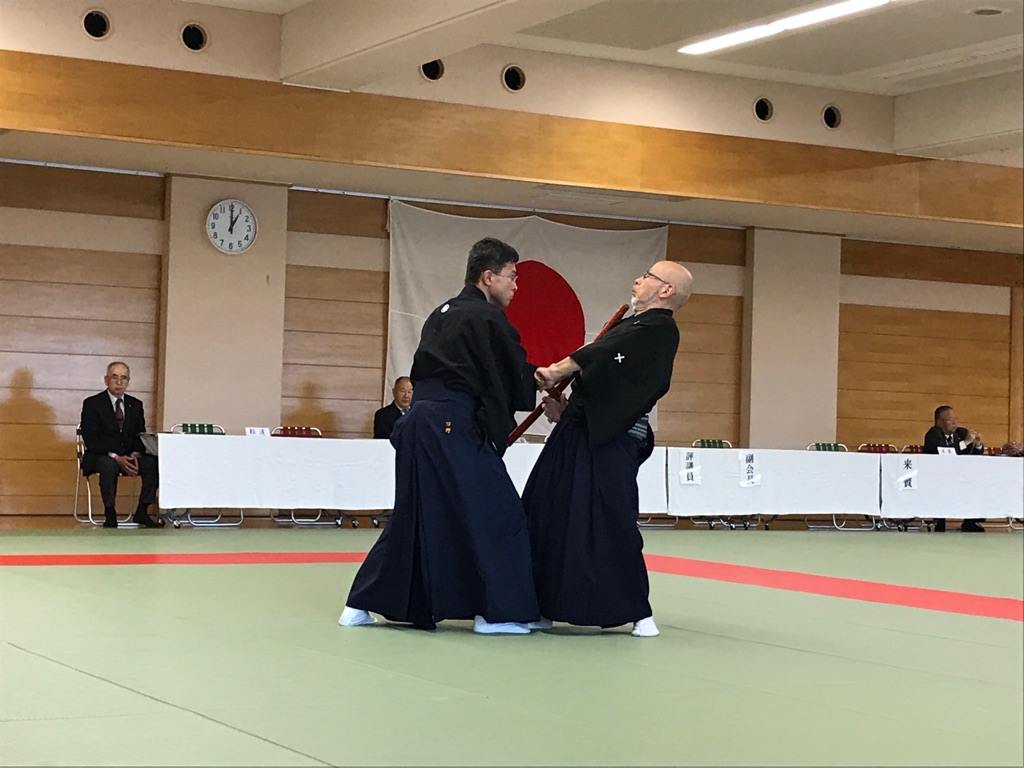 Yagyu Shinkage Ryu: The Shogun’s style
Yagyu Shinkage Ryu: The Shogun’s style
Where Katori Shinto Ryu was a battlefield style, Yagyu Shinkage Ryu was a duelling style. Instead of fighting against hundreds of enemies on the battlefield, now we are faced with situations where you are fighting one-on-one duels in the cities and towns. Once the fighting shifted to the towns and cities, the thinking in swordsmanship changed also.
Older styles focused on killing the opponent and survival on the battlefield meant killing as many enemies as possible; this is what we mean when we say “a killing sword”. Yagyu Shinkage Ryu however was very revolutionary in that it had a new philosophy. It focused on preserving life, not taking it; what we call “the life-giving sword”.
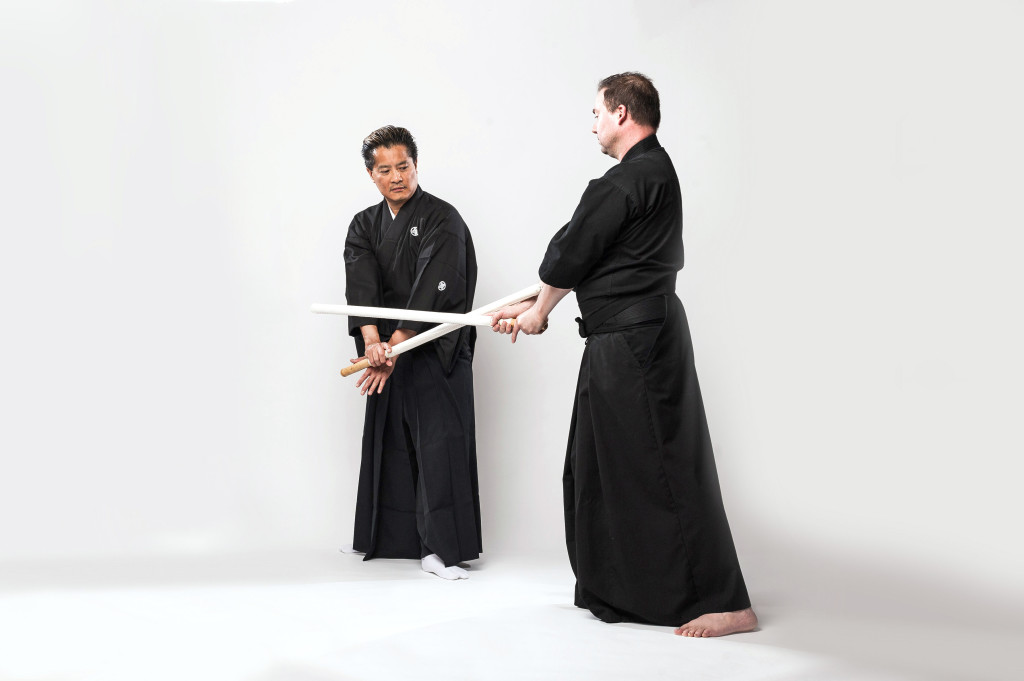 The Life-Giving Sword: not winning but not losing. A profound and novel concept in swordsmanship.
The Life-Giving Sword: not winning but not losing. A profound and novel concept in swordsmanship.
No longer were we trying to kill the opponent. Instead, many of the techniques in Shinkage Ryu focus on disabling the opponent (hitting his hands), making him unable or unwilling to continue to fight, subduing him until he could be taken into custody by the authorities. In many of the techniques of this style, you will see that we focus on hitting the hands so that the opponent cannot fight us anymore.
My master Kajitsuka Sensei explained it as this: “When you kill the opponent, there will be nothing but hatred left behind. But when you don’t win, BUT you don’t lose, there is respect left behind.” In this way, this style is very humane.
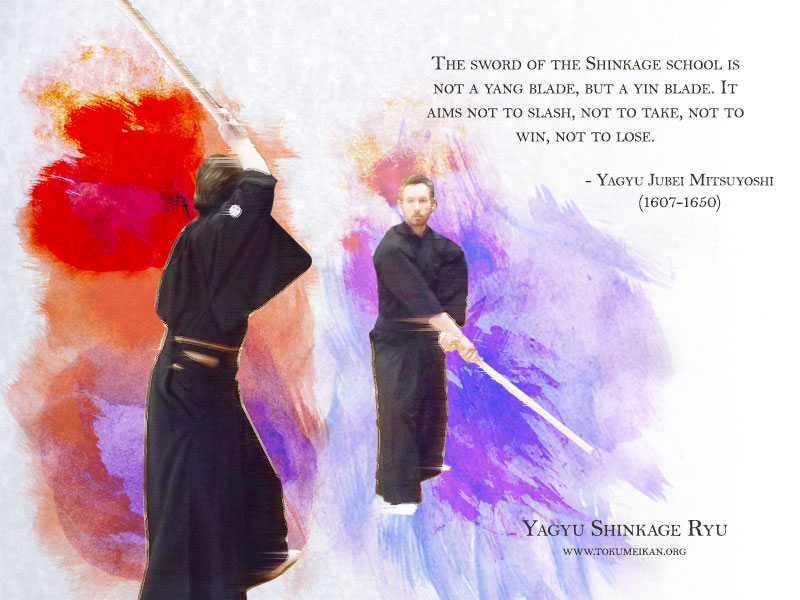
Why do you love this style?
Yagyu Shinkage Ryu is a beautiful style. It is simple yet refined. There is nothing crude or violent about it. It is elegant in its movements and techniques.
It is very sophisticated and philosophically-deep, being one of the few styles to truly fuse Zen with swordsmanship. And it is a humane art, focused on promoting peace and preserving life.
In these ways, Yagyu Shinkage Ryu is one-of-a-kind and very revolutionary when compared to other styles of swordsmanship.
Part 4: About studying traditional budo (martial arts)
How did you get started in kenjutsu?
Quite by accident. About a month after I had arrived in Japan, I was waiting for my train at Fujisawa Station to go to work. Along comes a gaijin (a Westerner) strolling down the platform and he stops by me and asks me quite directly, “You aren’t Japanese, are you?” I was astounded. I thought I looked like all the other Japanese people on the platform. I said, “No, I’m from Canada.” And then we struck up a conversation. As it turned out, this gaijin was Pat McCarthy, a fellow Canadian and famous karate teacher. He asked me later if I would like to see a really old sword art and I said sure, why not. The following Sunday, we arrived at Sugino dojo and as I stepped into the dojo, I was met by a little man with white hair and white beard (Yoshio Sugino sensei actually). He was very polite and invited me in and showed me a chair. I really didn’t know what to expect but once the practice started, I was in awe.
I feel now that it was destiny. Had I not been standing there on that platform at that precise moment when Pat walked by, I would never have met him and my life would have unfolded in a completely different way.
Why do you study kenjutsu?
For me, kenjutsu is all about spirituality and philosophy. Japanese swordsmanship is at its very core about Bushido: the samurai code of ethics. Concepts such as honour, dignity, respect, humility. When we study old samurai arts like kenjutsu, we are learning about ethics: how to live your life. These are important principles.
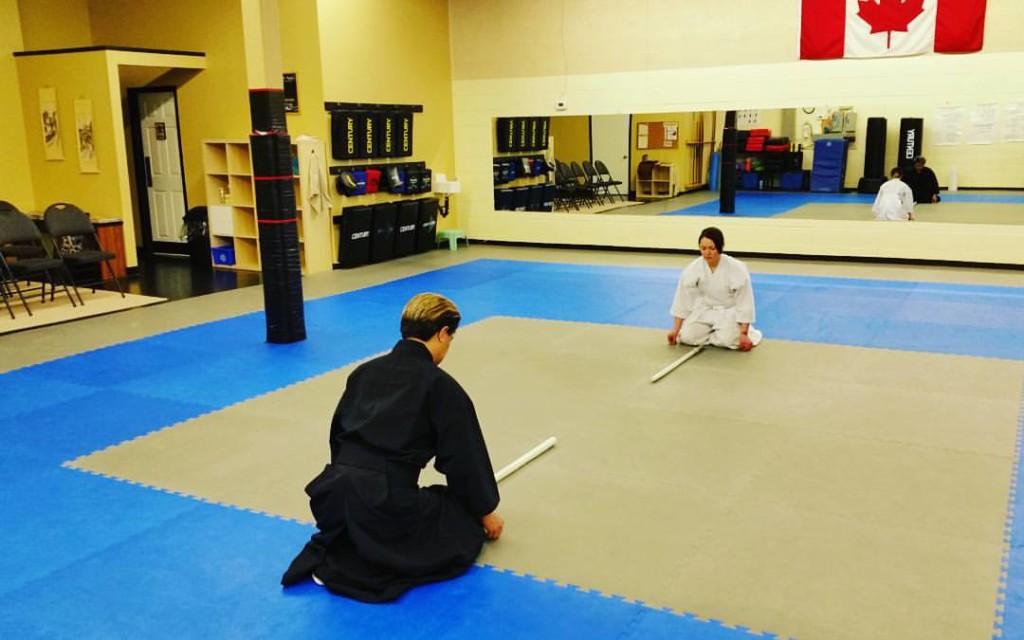 Yoshio Sugino Sensei: “Training in traditional budo begins with courtesy and ends with courtesy.”
Yoshio Sugino Sensei: “Training in traditional budo begins with courtesy and ends with courtesy.”
What did your teachers believe in?
Humility. Humility is a big thing in budo. Never getting a big head or thinking that you are greater than others. Staying humble and working hard. These are good virtues to live your life by.
Yoshio Sugino Sensei believed strongly in a famous Zen proverb: shoshin – beginner’s mind. Once you think you are some kind of expert or big-shot, you stop learning. Your mind closes. A beginner’s mind is fresh and open to new ideas, ready to learn and grow.
Likewise, my teacher Kajitsuka Sensei once said to me: “We are all mountain climbers in the same group, climbing the same mountain together. I am just farther up the mountain than you but I still have not reached the top yet. I am still climbing myself.”
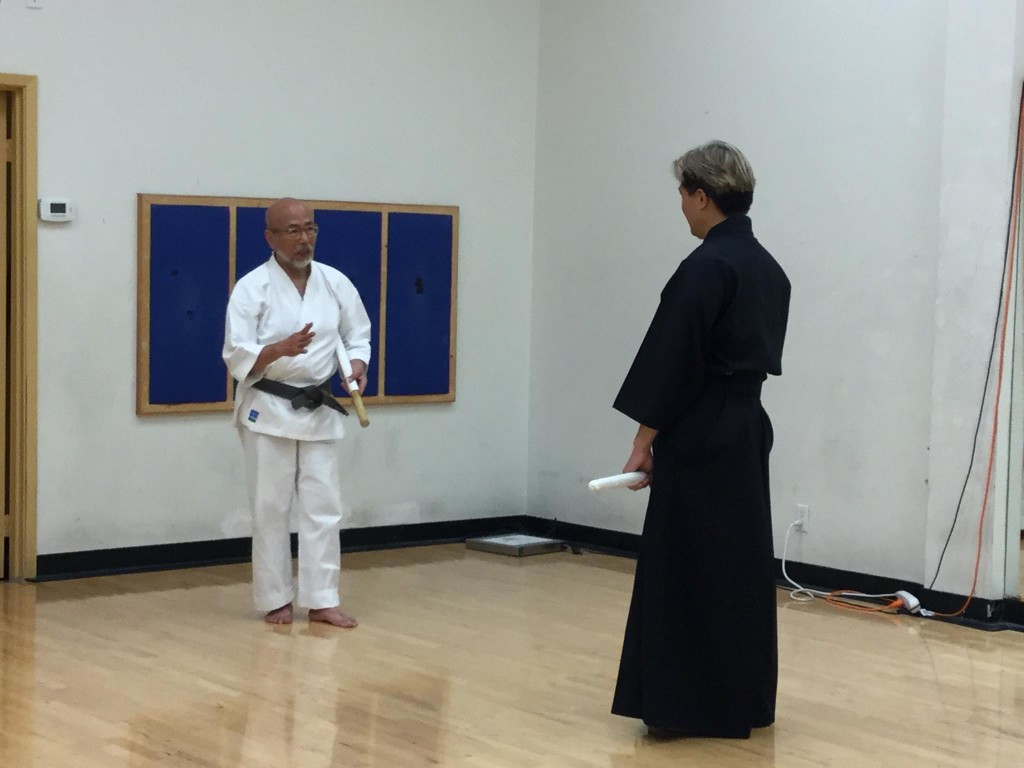 Master and apprentice: Kajitsuka Soke discussing Yagyu Shinkage Ryu theory with Mr. Tong in Toronto (2016)
Master and apprentice: Kajitsuka Soke discussing Yagyu Shinkage Ryu theory with Mr. Tong in Toronto (2016)
I like that. Staying humble and hard-working. Even a master such as himself is still learning much about himself and about budo every day. That’s inspirational.
Why do you pass it on?
I must repay a debt of honour. My teachers kindly taught me and now I must teach others.
What do you try to achieve in the teaching of your own students?
I try to be a role model like my teachers were before me. Hopefully, I can pass on what I have learned, not just the techniques but the spirit and attitude of budo as well. That code of ethics, that set of principles to live your life by. Because without those principles, kenjutsu becomes simply an art for killing. The ethics provide balance. It is a fine line between right and wrong, between the killing sword and the life-giving sword. So in my teaching, I always try to remember that swordsmanship is not just about techniques. It is about becoming a better person.
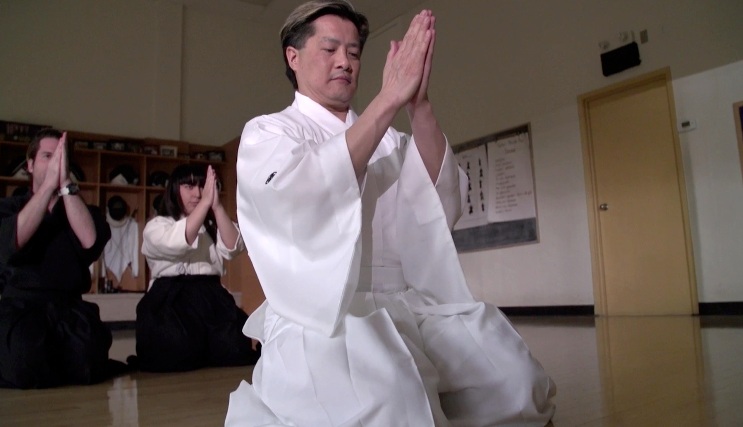 Respecting the gods, our ancestors, and the customs and traditions of the art is an important part of budo training.
Respecting the gods, our ancestors, and the customs and traditions of the art is an important part of budo training.
It’s ironic. In such a violent and deadly art like this, you find your humanity…
